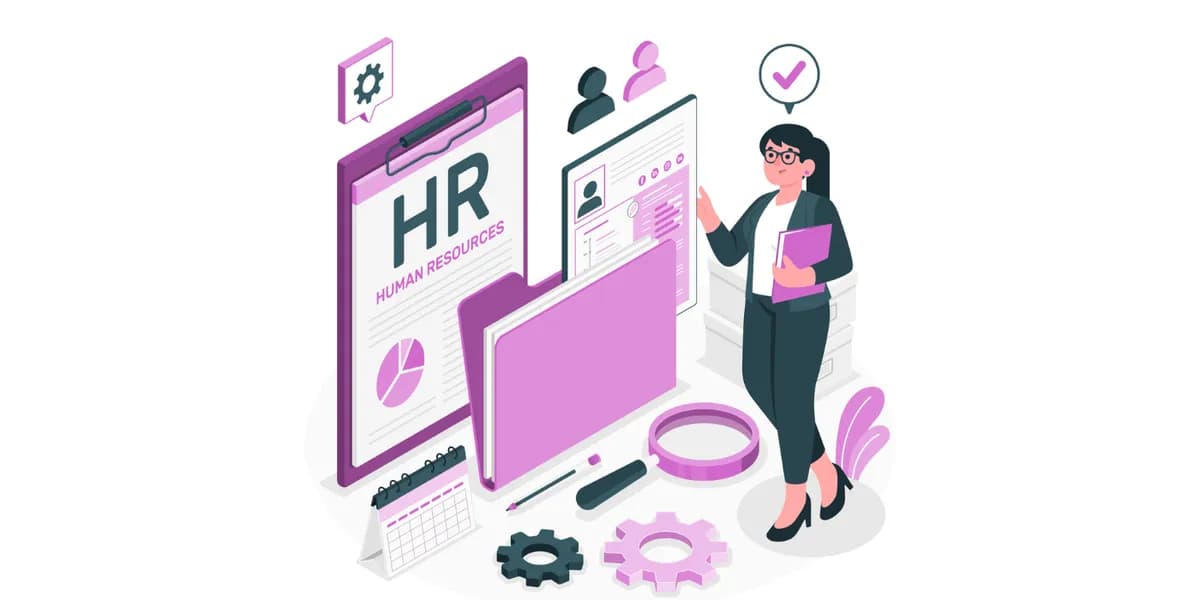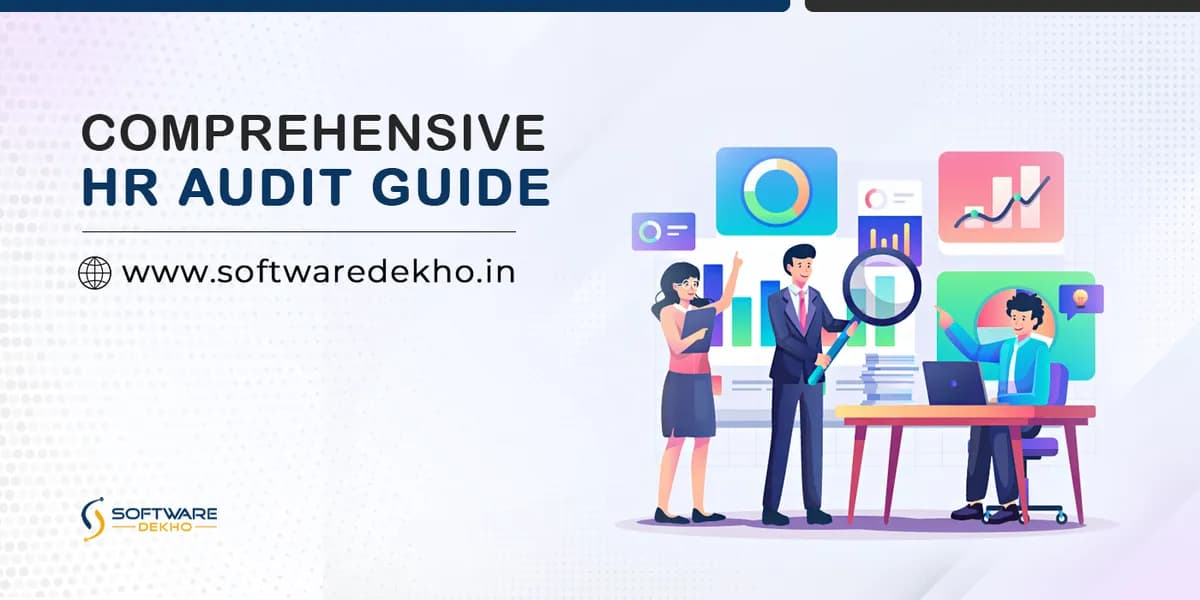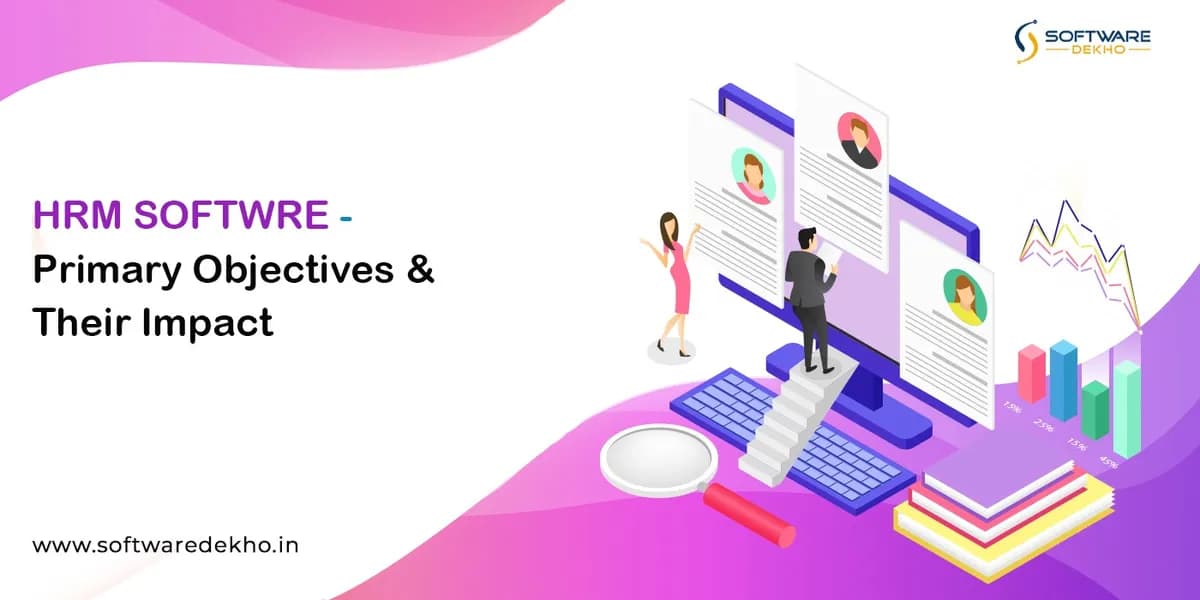A comprehensive guide to HR Audit
Effective human resource (HR) practices are essential for organisational success. An HR audit is crucial for companies trying to assess the effectiveness, efficiency, and compliance of their HR function.
Purpose of HR Audit
An HR audit is a systematic and objective evaluation of a company’s HR practices. It involves a thorough examination of policies, procedures, and programs related to various aspects of the employee life cycle. It includes recruitment, onboarding, training, compensation, performance management, employee relations, and compliance with labour laws.
The primary purpose of an HR audit is not to find fault, but rather to:
Identify areas for improvement: By uncovering potential weaknesses, companies can address issues before they escalate into bigger problems.
Ensure legal compliance: HR audits help mitigate legal risks by verifying adherence to relevant labour laws and regulations.
Benchmark against best practices: Comparing practices with industry standards helps identify areas for growth. Companies can implement different strategies to maintain a competitive edge.
Align HR with business goals: HR auditing helps assess if HR practices are effectively supporting and aligning with organisational objectives.
Promote transparency and accountability: Business owners promote accountability by reviewing existing practices. It can also help achieve fair and transparent treatment of employees.
Benefits of HR Audits
As quoted above, HR audits offer valuable insights into the effectiveness and legal compliance of a company’s HR practices. Implementing a well-planned and structured HR audit is a lot beneficial. Some benefits of conducting an HR audit include:
Legal Ease and Peace: Potential legal issues and fines associated with non-compliance with labour laws and regulations can be mitigated with timely audits.
Happy Work Atmosphere: Promoting a culture of fairness and transparency by demonstrating a commitment to ethical and compliant practices.
Elevate Employee Engagement: Addressing concerns and identifying areas for improvement in the employee experience leads to increased engagement and reduced turnover.
Smooth HR Operations: Identifying redundancies and implementing best practices can lead to cost savings and greater operational efficiency.
Apart from these, HR audits also help attract and retain top talent through effective HR practices. It provides a competitive edge to companies in respective marketplaces.
Types of HR Audit
Companies have various HR audit types to choose from, to target specific areas of concern or address broader objectives. Here's a detailed breakdown of the crucial types:
1. Comprehensive HR Audit:
It is an in-depth review that covers all aspects of the HR function, typically conducted every few years or during significant organisational changes. It assesses:
Recruitment and onboarding: Evaluating the effectiveness of attracting, screening, and hiring qualified candidates.
Training and development: Examining the adequacy and effectiveness of employee training programs.
Performance management: Assessing the fairness, consistency, and effectiveness of performance evaluation processes.
Compensation and benefits: Analysing the competitiveness and compliance of compensation and benefits packages.
Employee relations: Evaluating employee communication, complaint handling procedures, and conflict resolution mechanisms.
Recordkeeping and data security: Ensuring compliance with data privacy regulations and the security of employee records.
Compliance with specific laws and regulations: It might also cover areas like equal employment opportunity (EEO), wage and hour laws, and health and safety regulations.
2. Focused HR Audit:
It is a targeted audit focusing on specific concerns or areas where potential risks or weaknesses are suspected. Some examples of focused HR audits include
Compensation and benefits audits:
They focus on ensuring compliance with legal requirements like minimum wage and overtime pay. It also evaluates the competitiveness of compensation and benefits packages compared to the market and industry standards.
Recruitment audit:
This type audits the company’s recruitment process. It investigates the effectiveness of attracting diverse and qualified candidates, assessing the efficiency of the hiring process, and identifying potential biases.
Performance management audit:
It examines the fairness, consistency, and effectiveness of performance evaluation systems. It also covers assessing the feedback mechanisms and alignment with organisational goals.
Safety audit:
A safety audit assesses the company’s adherence to safety regulations. It also evaluates the effectiveness of safety measures and prevention programs in the workplace.
3. Compliance Audit:
This type of audit solely focuses on ensuring an organisation's compliance with specific laws and regulations related to HR practices. Some key areas of focus include
The Constitution of India: This includes fundamental rights such as equality, non-discrimination, and the right to work, which have implications for HR practices.
Minimum Wages Act: This act sets minimum wage standards for different categories of workers, including government employees. Additional Considerations:
State-specific regulations: Depending on the specific government department or agency, additional state-level laws and regulations related to HR practices might require consideration during the audit process.
Circulars and guidelines: Various governmental departments and agencies can issue circulars and guidelines related to specific HR practices. Companies must consider, review, and adhere to these during the compliance audit.
Understanding the different types of HR audits and their applications can help choose the appropriate approach to address unique needs and goals.
HR Audit Process
The success of an HR audit depends on a well-defined methodology and relying on the best practices. The following are the key steps involved in HR auditing:
1. Planning and Scoping:
Organisations usually start the HR audit process by planning and scoping the requirements. As in, they first decide which part of the HR you want to audit (can be comprehensive or focused).
Define the objectives: Clearly outline the specific goals and areas of focus for the audit.
Establish the scope: Determine the breadth and depth of the audit, considering factors like resources and timeframe.
Assemble the audit team: Create a team with diverse expertise, including HR professionals, legal counsel, and external auditors.
Develop an audit plan: Create a detailed roadmap that outlines the methodology, timeline, resource allocation, and data collection methods.
2. Data Collection:
Once you plan the requirements, you’ll have to proceed with collecting the information required to proceed with the audit. It goes like this:
Gather relevant documentation: This includes employee handbooks, policies, procedures, contracts, and training materials.
Conduct interviews: Interview HR personnel, management, and employees across different levels to gain insights into practices and perceptions.
Review data and reports: Analyse HR data like payroll records, employee engagement surveys, and performance reviews.
Conduct site visits: Observe work environments and practices firsthand, if applicable.

3. Analysis and Reporting:
Gathering the required information and resources will now require analysing and making necessary reports. It involves
Check: Benchmarks & Compliance: Assessing the collected data against established benchmarks, best practices, and legal requirements.
Identify strengths and weaknesses: Determine areas where the organisation excels and note down areas requiring improvement.
Develop recommendations: Provide concrete, actionable steps to address identified weaknesses and leverage existing strengths.
Prepare a detailed report: Present the findings, conclusions, and recommendations to relevant stakeholders in a clear, concise, and professional format.
This phase is a crucial part of every HR audit. So, business owners must be very careful throughout this stage. Some best ways to follow during analysis and reporting are:
Maintain confidentiality: Ensure privacy and anonymity for employees participating in the audit process.
Communicate effectively: Ensure that the stakeholders have all the relevant information throughout the process and address any concerns promptly.
Maintain objectivity: Remain unbiased and focus on factual findings and data analysis.
Consider Professional Auditors: Consider involving external auditors for complex audits or specialised expertise.
4. Implementation and Follow-up:
HR audits provide valuable insights into your company’s HR processes and recommend required changes. Once you identify the required changes:
Develop an action plan: Create a plan for implementing the recommended changes, including timelines, responsibilities, and resource allocation.
Communicate the plan: Inform stakeholders about the proposed changes and their impact.
Monitor progress: Track the implementation of the action plan and assess its effectiveness.
Conduct follow-up audits: Regularly review HR practices to ensure continued compliance and effectiveness.
Methods of HR Audit
An effective HR audit relies on a well-defined methodology that uses various data collection and analysis techniques. Here's a closer look at the different methods used in the HR audit process:
1. Document Review:
This method involves examining various HR documents and records. It includes
Employee handbooks: Assessing the accuracy and completeness of policies, procedures, and benefits information.
Job descriptions: Ensuring they accurately reflect the required skills and responsibilities for each position.
Employee contracts: Identifying potential inconsistencies with company policies or legal requirements.
Compensation and benefits records: Verifying the accuracy and compliance with relevant regulations.
Training records: Evaluating if the training programs are comprehensive. It also examines employee participation.
Disciplinary records: Assessing the consistency and fairness in disciplinary actions.
2. Interviews:
Interviewing different people involved with the HR department provides valuable insights into the perceptions and experiences of different stakeholders:
HR personnel: Gaining a first-hand understanding of current practices, challenges, and areas of expertise.
Line managers: Assessing their perspective on HR practices, effectiveness of training programs, and employee performance management.
Employees: Identifying their experiences with recruitment, onboarding, training, compensation, and workplace culture.
Legal counsel: Consulting with legal experts on potential compliance risks and best practices.
3. Surveys and Questionnaires:
Utilising surveys and questionnaires provides scope for broader data collection from a larger employee population, ensuring anonymity and confidentiality. It can be done through:
Employee engagement surveys: Assessing employee satisfaction, motivation, and commitment to the organisation.
Climate surveys: Evaluating perceptions of fairness, trust, and respect within the workplace culture.
Exit interviews: Gathering feedback from departing employees to understand reasons for leaving and identify areas for improvement.
4. Data Analysis:
Extracting and analysing data from various HR systems can uncover trends and patterns, providing valuable insights. It covers
Applicant tracking systems (ATS): Assessing the effectiveness of the recruitment process and identifying potential biases.
Performance management systems: Analysing performance data to identify areas for improvement in individual or team performance.
Payroll records: Verifying adherence to wage and hour laws and identifying potential pay discrepancies.
5. Benchmarking:
Comparing HR practices against industry standards or best practices in similar companies can highlight areas for improvement. You can do this through:
Industry reports and data: Using benchmarking resources provided by industry associations or research firms.
Consulting with external HR specialists: Gaining insights into best practices and trends in specific areas of HR.
Combining these methods can help companies collect comprehensive and diverse data from various sources. It enables a holistic and insightful HR audit. The specific combination of methods used will depend on the type of audit, its scope, and the resources available. Whether conducted comprehensively, focusing on specific areas, or ensuring legal compliance, HR audits help companies identify areas for improvement, build a stronger foundation for their human resources, and ultimately contribute to a sustainable future.
You must conduct thorough research and read user reviews to choose the best software for your needs. So, take a look at our website to understand better!






